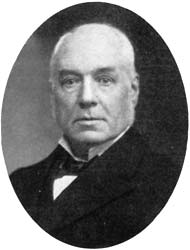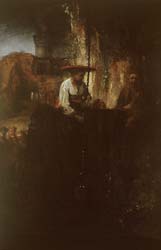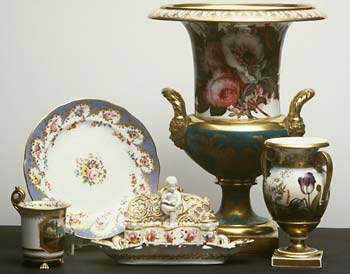
  Contact DetailsSchool of Art |
Sir John Williams 1840–1926On his death in 1926, Sir John Williams the internationally renowned Professor of Obstetric Medicine, eminent Court physician and President of the Gynaecologists and Obstetricians of the Empire, bequeathed his house, its contents and one half of his money to the University. The other half, along with pictures relating to Wales, he left to the National Library in Aberystwyth to join his earlier gift of an outstanding collection of rare books and early Welsh manuscripts. Throughout his life he was a generous benefactor of Welsh causes. Photograph of Sir John Williams  Painting from the studio of Rembrant van Rijn entitled Christ and the Woman of Samaria, 1650s, from the Sir John Williams Bequest Sir John and Lady Williams collected expensive period furniture, pictures and ceramics according to their taste for 18th-century furniture by, or in the style of, Chippendale, Hepplewhite and Sheraton. In 1883 he became a close friend of the Swansea-born painter, art critic and collector John Deffett Francis. On his advice Williams purchased works of art. Deffett Francis was not the most discriminating or discerning of collector-dealers. Over zealous in his attribution of paintings both for himself and for John Williams many have now been relegated to the rank 'School of ...' or 'Follower of ...'. Amongst Williams' oil paintings are works ascribed to Rembrandt, Rosa, Watteau, Gericault and Reynolds. In 1913 Williams succeeded Lord Rendel as President of the University, a position he held until his death. Lady Williams died in 1915 just months after she presented her collection of early 19th-century Swansea and Nantgarw porcelain to the University. Williams was foremost a bibliophile and his library of Welsh books and manuscripts was systematically acquired. The group of paintings however was never conceived as a collection, no apparent rationale underpins his acquisition of works of art. Not surprisingly there are Welsh subjects but for the most part, the oil paintings were purchased for their decorative qualities, to complement his 18th-century furniture.  Items of Swansea and Nantgarw china |